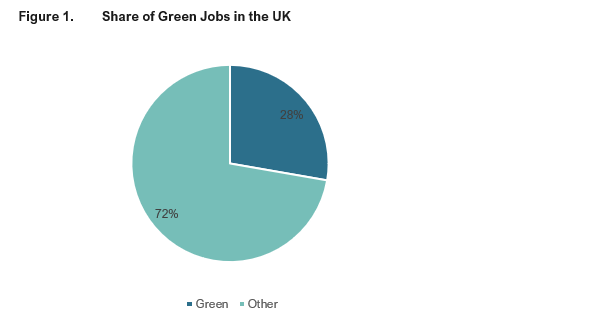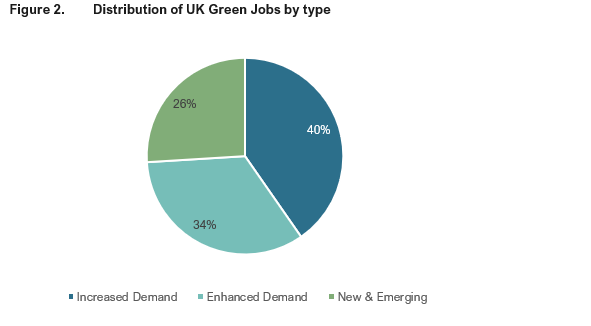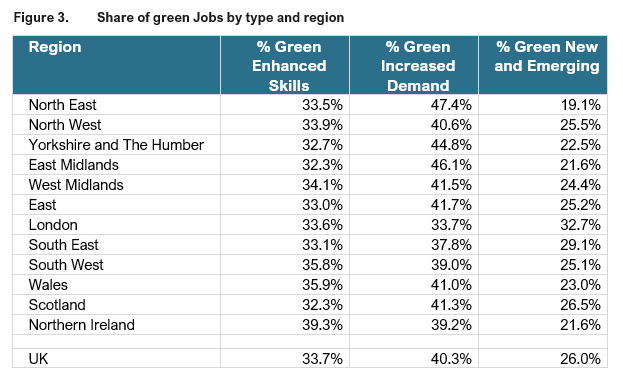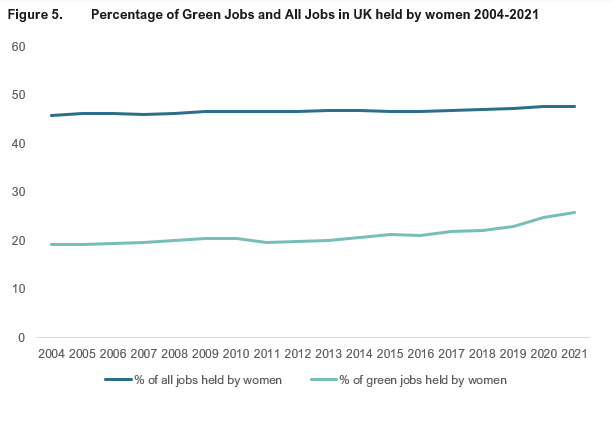By Fiona Tuck and Gillian O’Connell
Analysis of occupational data shows a shocking disparity in gender balance in Green Jobs, with only one in four held by women.
The race to Net Zero and consequently, Green Jobs, is at the centre of current policy, laced through pretty much any (strategy, framework or mission) document you might care to read.
“We are on the precipice of a Green Industrial Revolution, which will deliver a smarter, fairer, greener future, but failing to get ahead of the game on the green jobs that will accelerate our journey to Net Zero and deliver transformative disruption, creating huge opportunities for people and places across the UK.”[1]
There’s no argument that we need, collectively and purposefully, to secure benefits from the inevitable change and restructuring ahead of us as we address the challenges presented by climate change and continue to unlock the potential of emerging technologies. But, conspicuously absent from any of the current discourse is – who are these green jobs for?
Part of the challenge here is that it’s taken quite a while for any dust to start settling on what a green job actually is and how to measure it. The whole jury is still out, but some members are starting to file back. The definition developed and applied in London[2] and Scotland[3] last year seems pragmatic; not least because it gets us to a useable measurement by Standard Occupational Classification (SOC) codes that, whilst with recognised limitations, works for now and can be easily repeated and updated. This is much preferable to a state of not knowing anything, or drawing together disparate data.
Both adapt from the same study[4] and both have at their core three types of Green Job – here quoting from the London version, because that also includes a list of SOC codes that we’ve used to do our own analysis:
Green ‘increased demand’ occupations – these green occupations are not subject to any significant change in work and worker requirements, but are in increased demand due to greening. The context of work might change but the competencies and tasks remain the same.
Green ‘enhanced skills’ occupations – these green occupations are not new but are subject to significant changes in work and worker requirements, which may or may not be associated with a change in demand. The essential purposes of the role remain the same, but tasks, skills, knowledge and external elements, such as credentials, are altered.
Green ‘new and emerging’ occupations – the impact of green economy activities and technologies is sufficient to create the need for unique work and worker requirements, resulting in the generation of new or renewed roles. These new roles could be entirely new or ‘born’ from existing occupations.
Five points are in-vogue here so here we go, with charts and tables below:
First is that people employed in these occupations account for 28% of the total workforce. So whilst focus and attention on Green Jobs is important, there needs to be some clear attention on the 72% of other jobs.
Second is that a huge chunk of the demand is for new skills and knowledge in jobs that already exist, not that many are new. Partly this is because no-one can predict the future and name jobs that will exist or expire. So long Knocker-Uppers, Human Computers and Telegraphists – hello Data Scientist, UX designer and Social Media Manager!
Third is this doesn’t change much by region, but as might be expected those with a heavier industrial past and manufacturing present have larger footprints of people in jobs that will need to change. These places will see most disruption and need a strong approach both to re-skilling and job creation.
Fourth is that, pre-pandemic, Green Jobs growth was outstripping the rest of the economy, but that has stopped sharply. Since 2020 huge numbers of people in jobs in those enhanced and increased demand categories have dropped out of the workforce. Growth is already coming from mainly from those New and Emerging Occupations, whatever they end up being.
Fifth – and getting to the crux of the issue on International Women’s Day - is that the gender balance is shocking. Only a quarter of people employed in one of these Green Jobs are female. This is slightly better in New and Emerging occupations, where it’s almost a third. Though this feels like a small victory when just under half of the workforce is female.
These are jobs in industries that are traditionally dominated by men, but by any measure that final point is grim reading. In the last 20 years the gender balance in these jobs has only tipped toward women by 6 percentage points.
Above and beyond the opportunities presented over the next 20 years as we race to net-zero, the most transformative disruption would come from pro-active policies to address this imbalance. If we really want a smarter, fairer, greener workforce that is fit for the future it can’t just be Green Jobs for the boys.
The data
All analysis is drawn from the Annual Population Survey (2021). The occupation-based definition of green jobs we have used is taken from the GLA’s paper.
We are happy to share the excel, which contains all the regional breakdowns. Just get in touch: fiona.tuck@metrodynamics.co.uk or gillian.oconnell@metrodynamics.co.uk
[1] A made up quote, drawing keywords and phrases plucked from a small sample of policy documents on our virtual desks this week.
[2] Rocks, GLA Economics (2022) Identifying Green Occupations in London: https://www.london.gov.uk/sites/default/files/identifying_green_occupations_-_working_paper_99.pdf
[3] Rubio, Warhurst & Anderson, Warwick IER (2022) Green Jobs in Scotland: An inclusive approach to
definition, measurement and analysis: https://www.skillsdevelopmentscotland.co.uk/media/49807/green-jobs-in-scotland-report_final-1.pdf
[4] Dierdorff et al. (2011) Greening of the World of Work: Revisiting Occupational Consequences: https://www.onetcenter.org/dl_files/Green2.pdf






